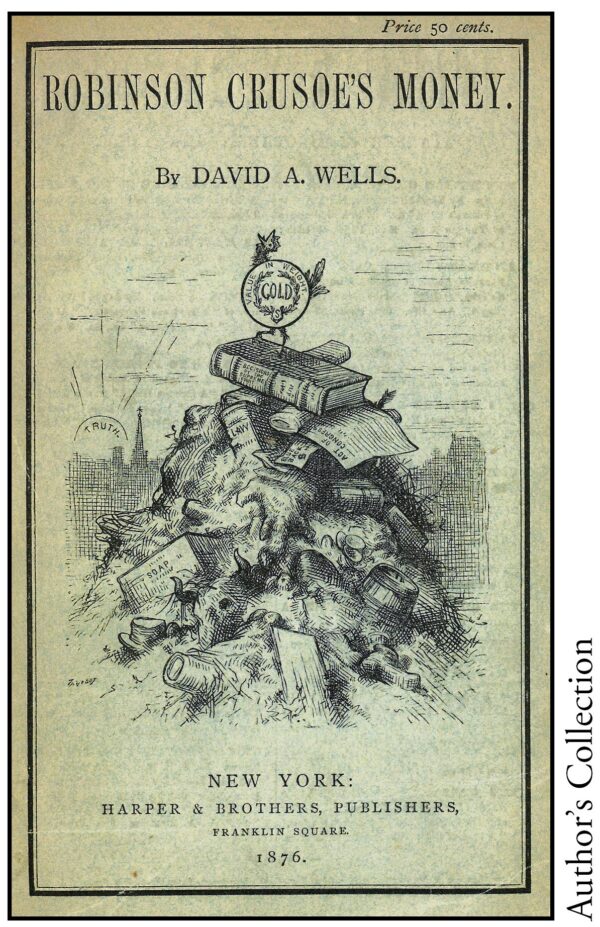
Harper’s Weekly – March 16, 1878
President Ulysses Grant tried to put the money question to bed when he vetoed the Inflation Bill (relating to greenbacks) in 1874, and signed the Resumption Act (relating to gold) in January 1875; it was scheduled to become operative four years later, in the middle of Rutherford Hayes’s Presidency. Nast created the Money Bag and the Rag Baby to symbolize inflation, and used them effectively to back his idol.
During 1875, Nast illustrated a small paperback book by David Wells entitled Robinson Crusoe’s Money and published by Harper & Brothers in January 1876. Wells was a financial expert, who had served as a Revenue Commissioner for both Abraham Lincoln and Andrew Johnson, and strongly opposed inflationist policies, including the new threat, “free silver.” That experience gave Nast better insight into the technicalities of the money question than he could otherwise have obtained.
Before 1873, the country was on a bimetallic standard where both gold and silver were coined at a fixed ratio. That year, in what silver proponents later called the “Crime of ‘73,” silver was quietly removed as legal tender except for small change; nobody seemed to notice or object.
Soon afterwards, new discoveries in Nevada in the Comstock lode and other large silver deposits — boosted by novel mining equipment and techniques, and transported on new railroads — provided a surplus. The interests of Western miners in reactivating silver currency, and Western farmers in paying off mortgages and other debts in cheaper currency, converged.
Here, Nast depicted the Rag Baby after it swallowed the new over-valued silver dollar, which was worth about 92 cents initially.
Nast’s title related to silver backers referring to the “dollar of the daddies” — their metal co-existing with gold from Alexander Hamilton’s time as the first Secretary of the Treasury. (Ignoring the fact that he paid the young country’s debts in gold.)

